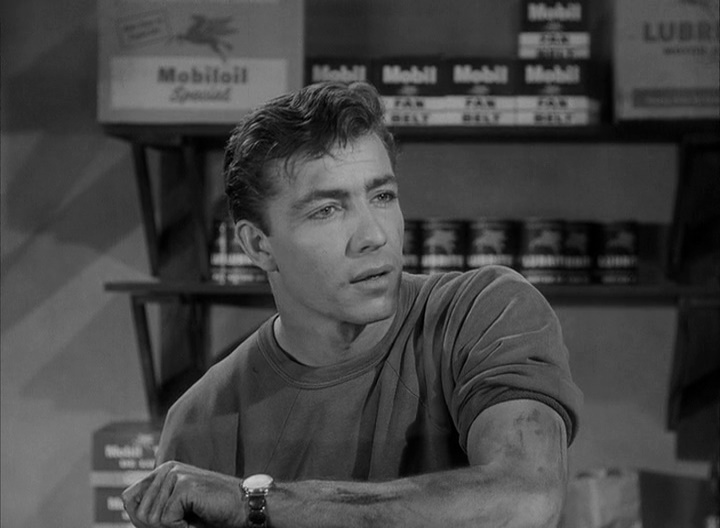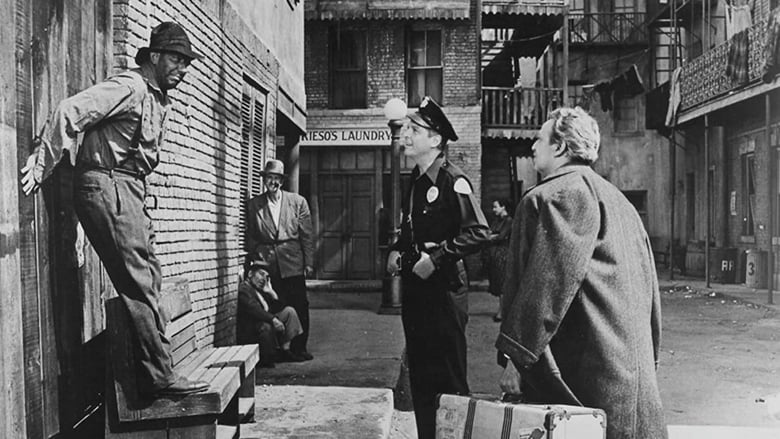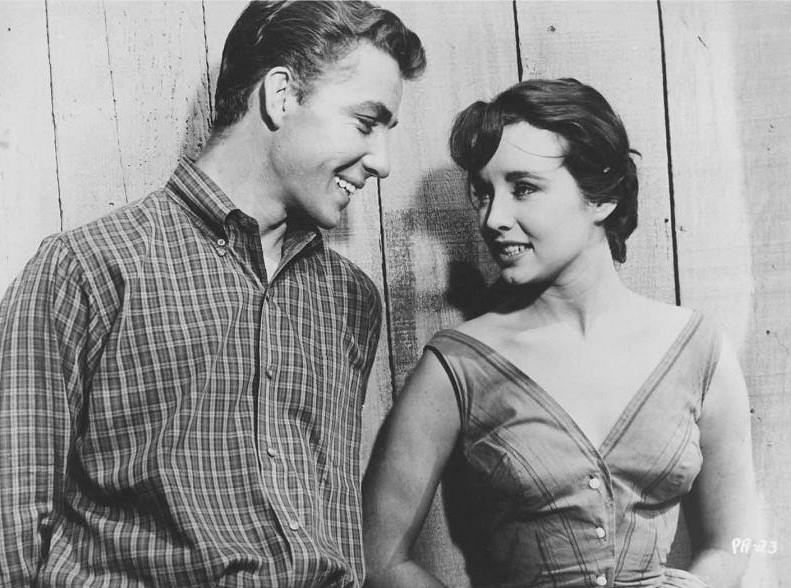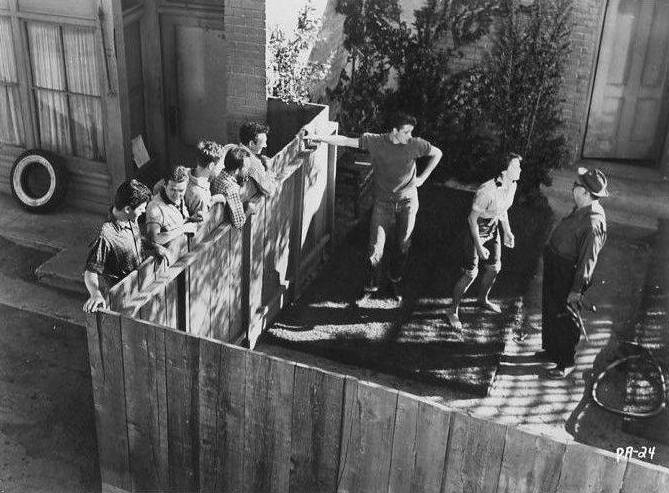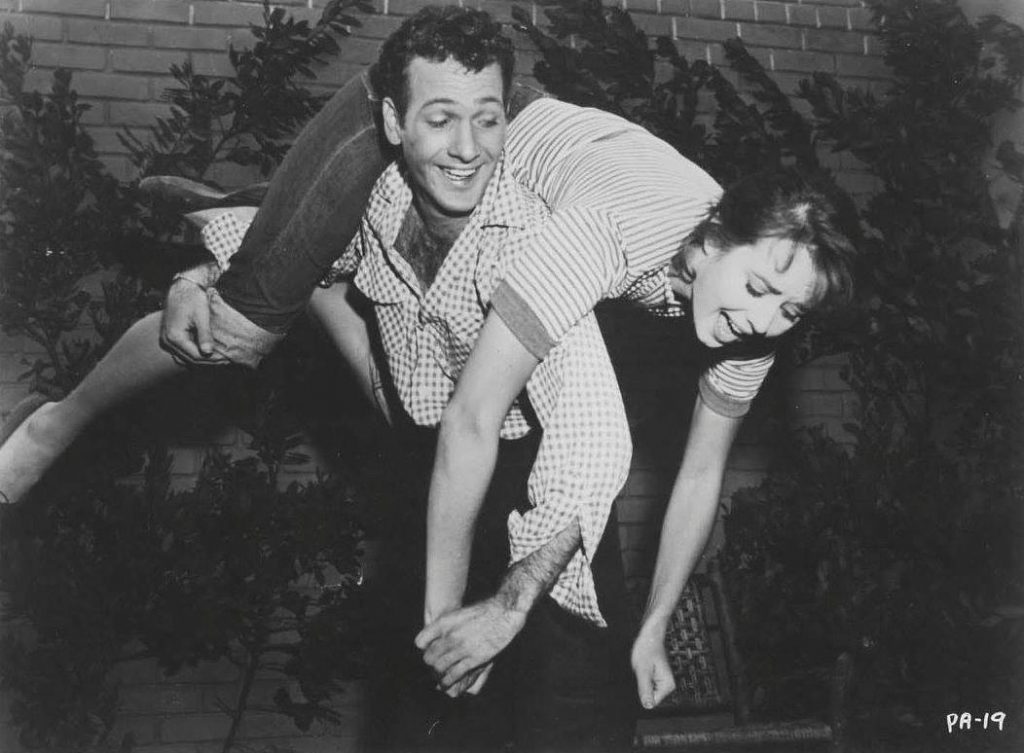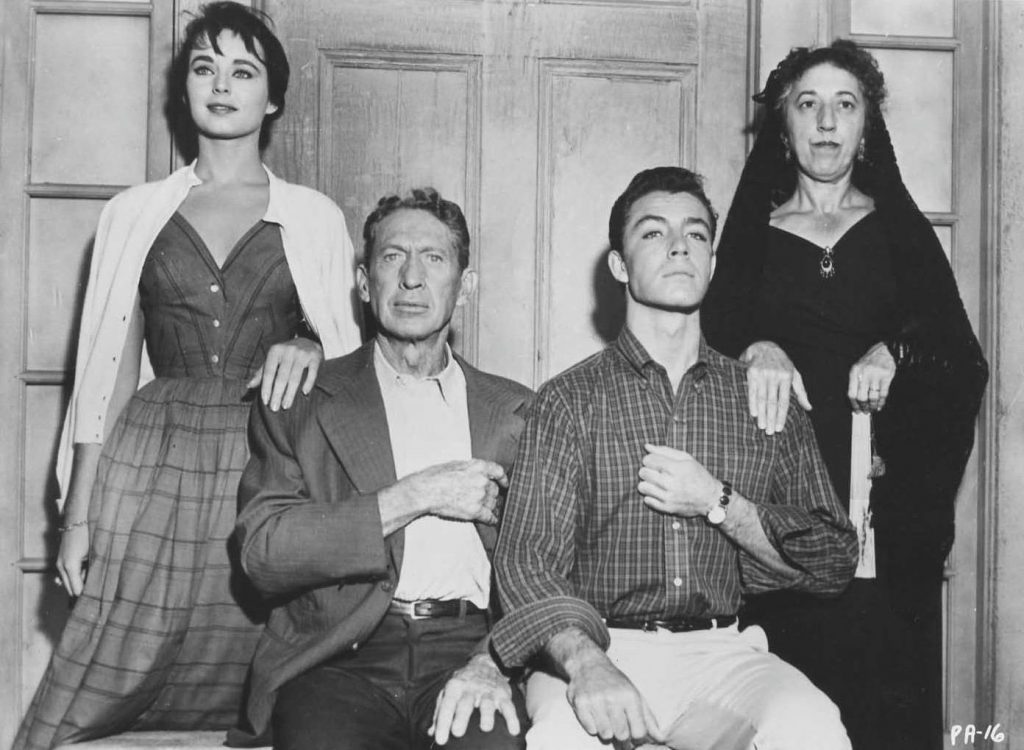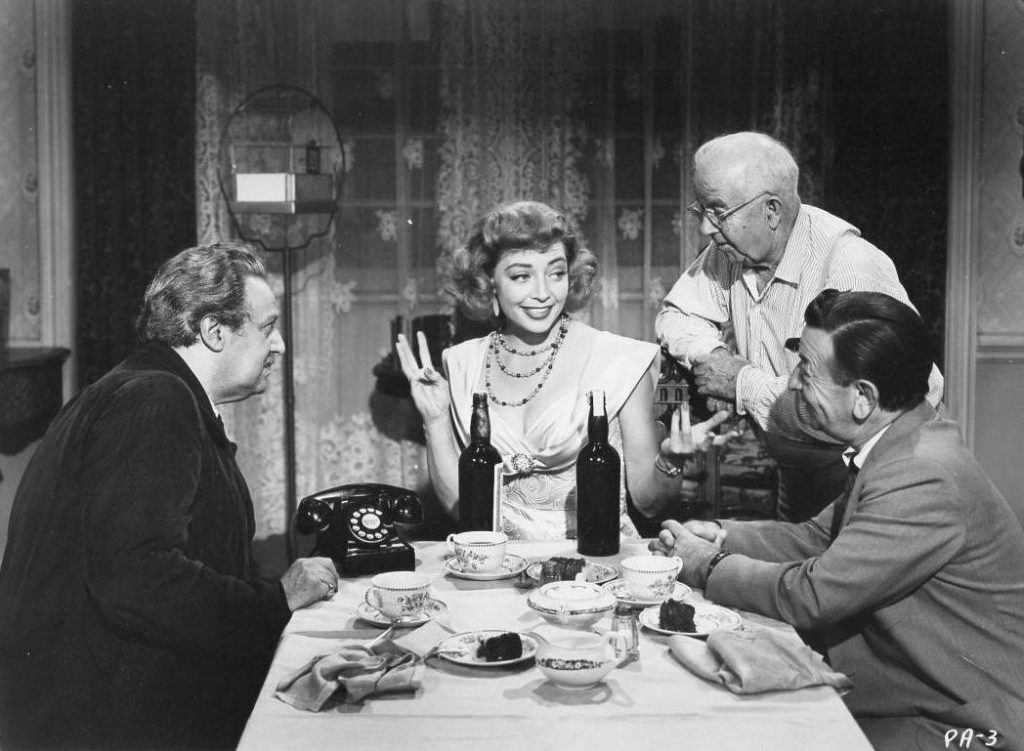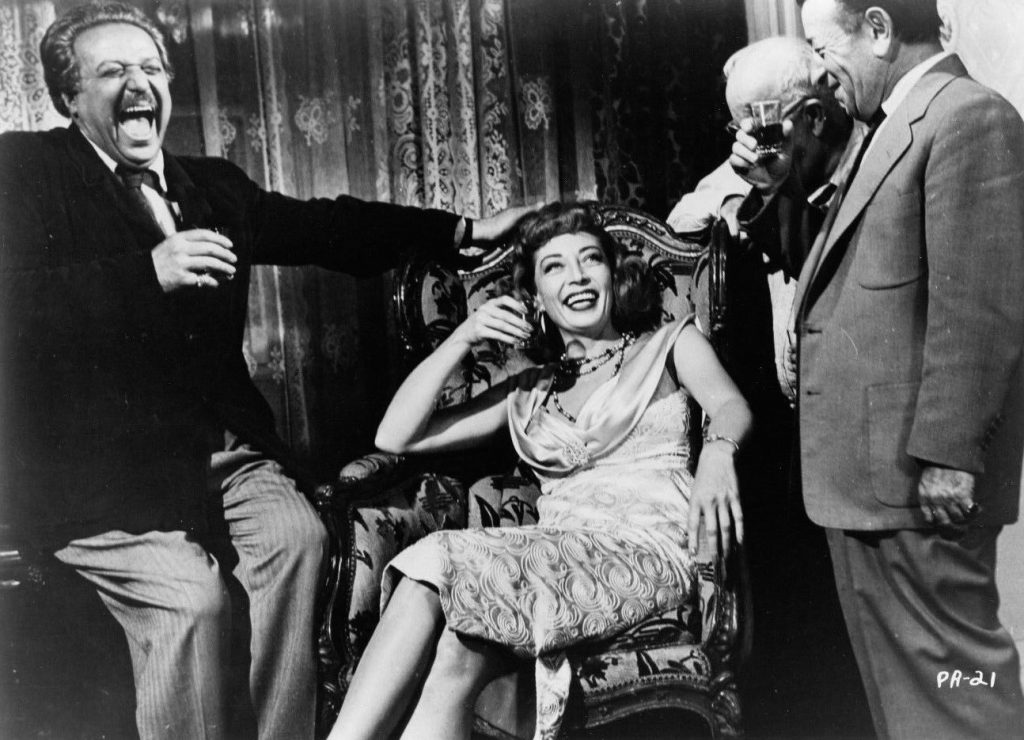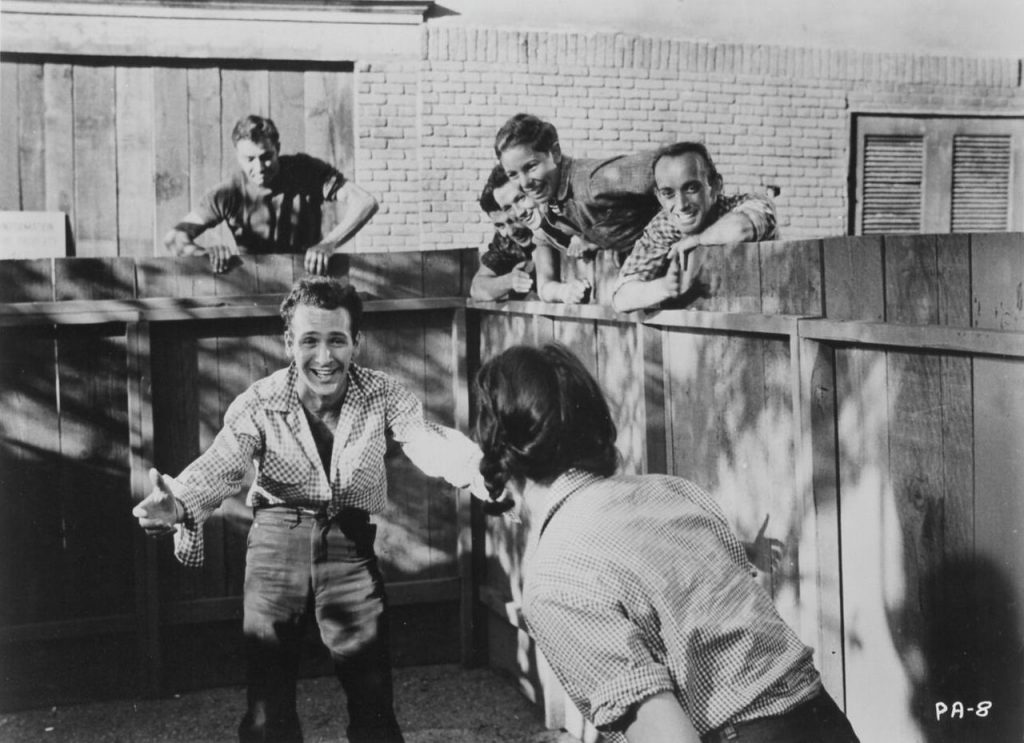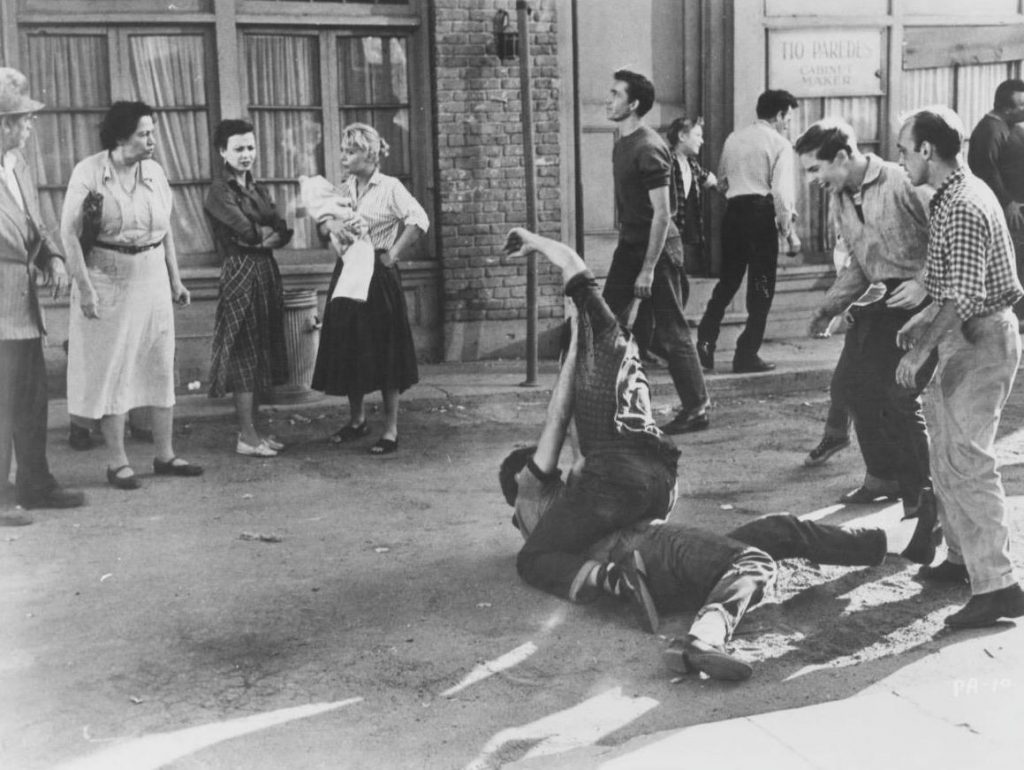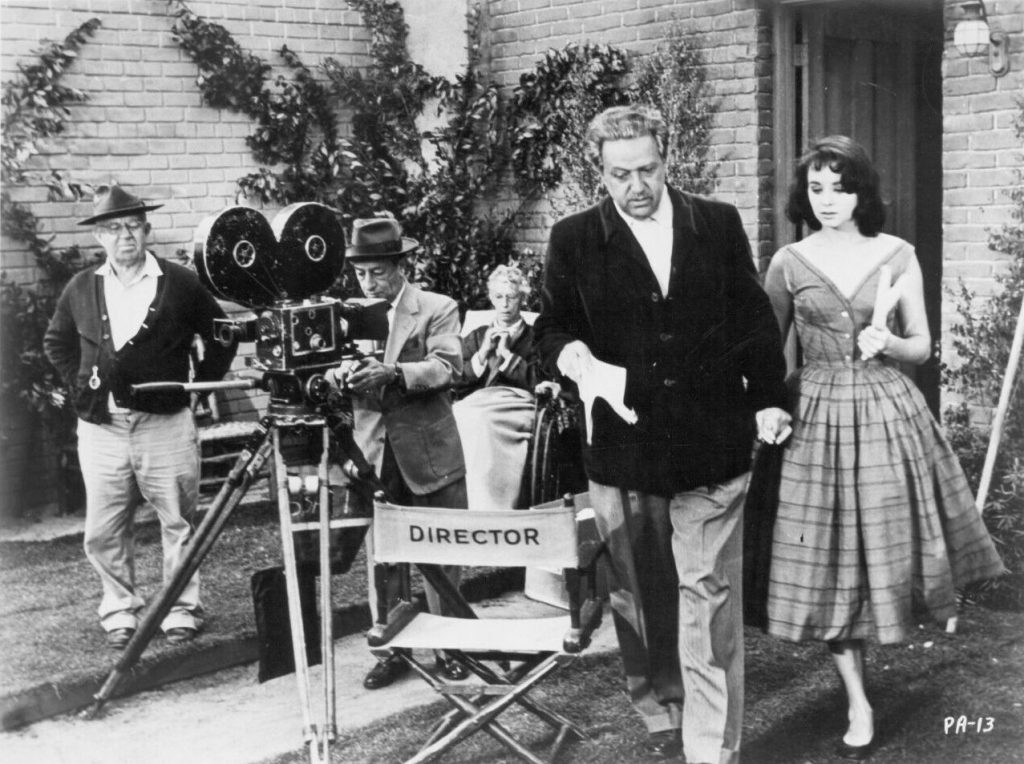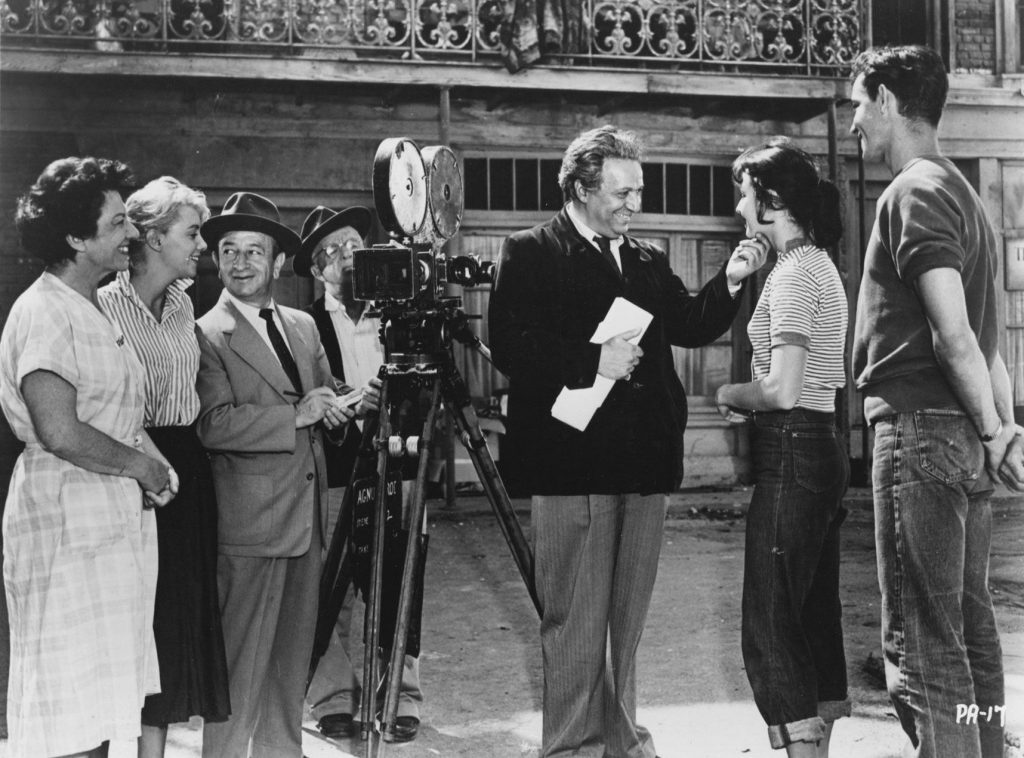
Paradise Alley (USA, 1962) 81 min B&W DIR-PROD-SCR: Hugo Haas. MUSIC: Franz Steininger. DOP: Jack MacKenzie. CAST: Hugo Haas, Don Sullivan, Carol Morris, Marie Windsor, Corinne Griffith, Billy Gilbert, Chester Conklin, Margaret Hamilton, Pat Goldin, William Forrest, William Schallert, Tom Fadden, Jan Englund, Jesslyn Fax, Almira Sessions, Duke Mitchell (Astor Pictures)
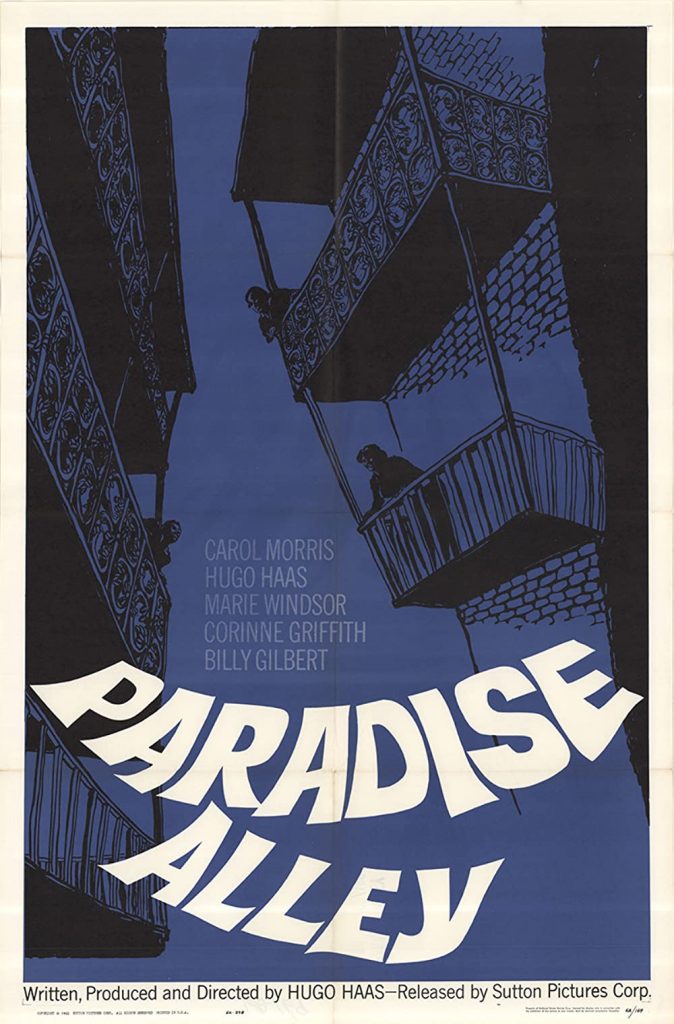
In this engaging piece of Capra-corn, writer-director Hugo Haas plays a once-great filmmaker, Mr. Agnus, who moves into a neighbourhood where everyone is arguing, and decides to bring peace to the borough by making a movie with its residents as the stars. Paradise Alley (also released under the appropriate title, Stars in the Backyard) benefits from a cast of veterans in supporting roles. Billy Gilbert is Mr. Wilson, constantly at odds with the shrewish Mrs. Nicholson (Margaret Hamilton, who by now could’ve played this role in her sleep); film noir queen Marie Windsor is great fun as the starstruck glamour girl Linda Belita; William Schallert is a casting director; and most amusingly, Chester Conklin plays “Chester Conklin’s cousin”, Mr. Gregory, a former cameraman from the days of D.W. Griffith! Gregory has an old inoperable movie camera in his flat, which inspires Agnus to do the film. Light years before Dennis Hopper’s The Last Movie, Agnus and company make the movie without any film in the camera!
Only some wise guys on the corner ever question why there are never any cords or microphones on the set. Everyone else is blinded by the fact that they are going to be stars! There is also a Capulet-Montague romance with former Miss Universe Carol Morris (particularly delightful as Wilson’s starstruck daughter Susie) and Steve Nicholson (Don Sullivan), the son of her dad’s number one enemy!
Mr. Wilson frets over his melodramatic sequence to be “filmed” with his old enemy Mrs. Nicholson. Agnus tells him it’s only a movie after all, and the parts we play differ from those in real life. Agnus makes the movie as an excuse to pacify the neighbourhood, and to bring out the humanity that he knows is beneath everyone’s quarrelsome exteriors: the role of kindness is what he wants them to play in real life as in “reel life”.
The viewer wisely waits for the shoe to fall, wondering when his neighbours will discover that there is no film in the camera, thus misunderstanding his good intentions. However, in Haas, things seldom transpire as obviously as one would assume. Paradise Alley becomes even more memorable by an amazing narrative shift in its final quarter, when Agnus has a chance meeting with studio heads, thus affecting the outcome of this fantasy project.
Many films have been made about the magic of movies, and Paradise Alley can be added to a short list (including Cinema Paradiso) of works that explore the allure of movies to everyday viewers. As with Haas’ earlier cynical film about the movie industry (The Other Woman), he again plays a once-famous director, but this is a refreshingly positive look at making movies, more so given Haas’ increased difficulty in producing anything. Paradise Alley suggests that Hugo Haas still approached filmmaking with a genuine love of the medium, and its creative collaboration.
While movies were becoming increasingly cynical, it is fitting that the film career of Hugo Haas ends on a whimsical note that recalls the days of Judy Garland and Mickey Rooney. (“Hey I’ve got some curtains in the barn, let’s do a show!”) Paradise Alley would be his last released film. It sat on the shelf for years before it finally crawled out to release in 1962 and feels like a fitting cinematic swan song. Perhaps it was shot earlier than Born to Be Loved (1959), as the credits say “Introducing Don Sullivan”, who appeared in other films circa 1958. In an interview on the B Movie Cast, Don Sullivan laments: “Poor Hugo made a sweet little classic movie at the same time that monster films and rock and roll stuff was in its heyday, so there was nobody interested in that film.”

